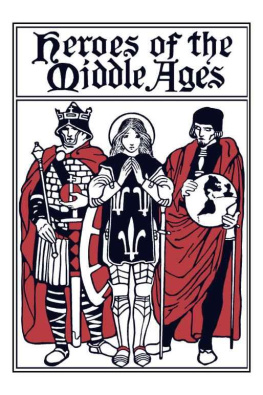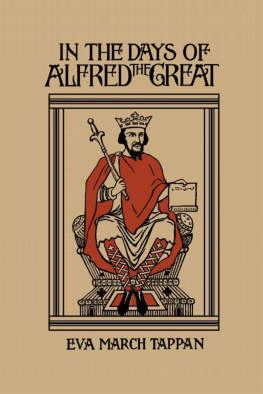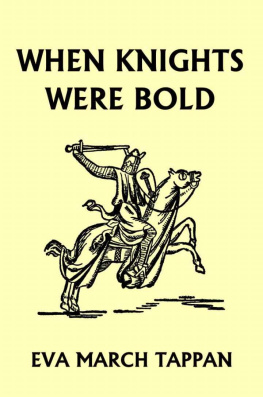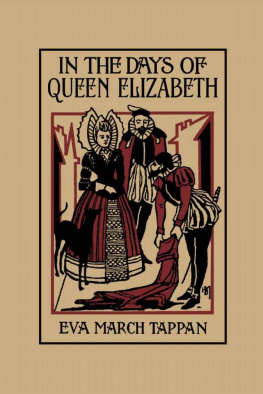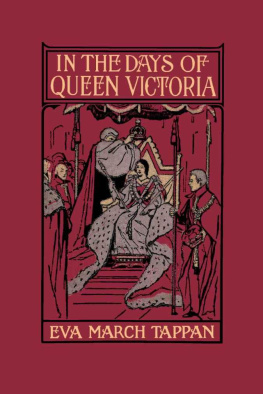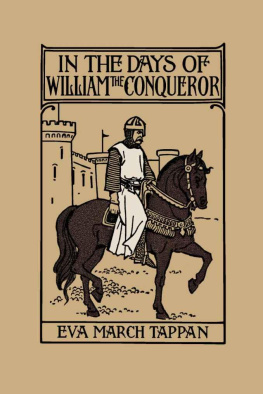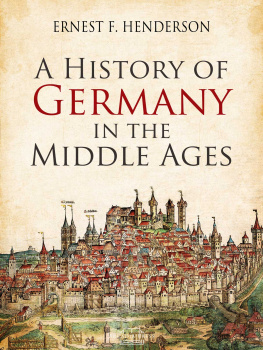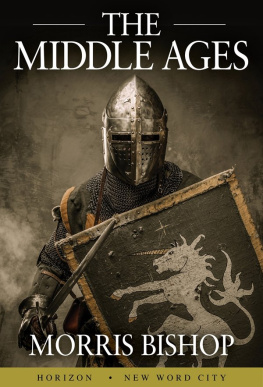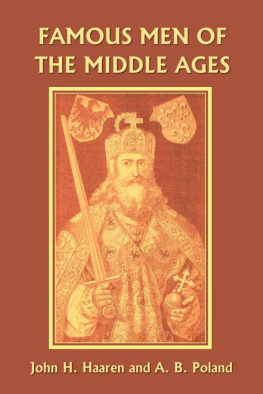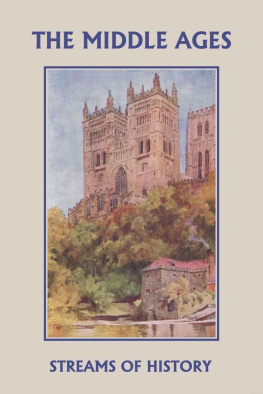Heroes of the Middle Ages
by
Eva March Tappan
Yesterday's Classics
Chapel Hill, North Carolina
Cover and Arrangement 2010 Yesterday's Classics, LLC
All rights reserved. No part of this book may be reproduced or retransmitted in any form or by any means without the written permission of the publisher.
This edition, first published in 2010 by Yesterday's Classics, an imprint of Yesterday's Classics, LLC, is an unabridged republication of the work originally published by George G. Harrap & Co. in 1911. This title is available in a print edition (ISBN 978-1-59915-169-4).
Yesterday's Classics, LLC
PO Box 3418
Chapel Hill, NC 27515
Yesterday's Classics
Yesterday's Classics republishes classic books for children from the golden age of children's literature, the era from 1880 to 1920. Many of our titles are offered in high-quality paperback editions, with text cast in modern easy-to-read type for today's readers. The illustrations from the original volumes are included except in those few cases where the quality of the original images is too low to make their reproduction feasible. Unless specified otherwise, color illustrations in the original volumes are rendered in black and white in our print editions.
Preface
I have sometimes wondered if every one realizes how startingly independent and isolated a historical fact is to the young reader. It has happened before his remembrance, and that alone is enough to put it into another world. It is outside of his own experience. It has appeared to him by no familiar road, but from unknown regions of space.
The object of this book is to bring together stories of the most important movements in the history of Europe during the Middle Ages, and to make familiar the names of the most important figures in those scenes. I have endeavoured to weave a tapestry in which, with due colour, may be traced the history of the rise and fall of the various nationalities and the circumstances and mode of life of eachin short, to give the young reader an approximation to the background for the study of his country's history which a wide reading gives to a man.
EVA MARCH TAPPAN
Contents
THE FIRST PERIOD
THE BARBARIAN INVASION
THE SECOND PERIOD
THE FORMING OF THE GERMANIC NATIONS
THE THIRD PERIOD
THE TEUTONIC INVASIONS
THE FOURTH PERIOD
THE RISE OF NATIONALITIES
THE FIFTH PERIOD
THE CRUSADES
THE SIXTH PERIOD
THE TIME OF PROGRESS AND DISCOVERY
THE SEVENTH PERIOD
THE STRUGGLES OF THE NATIONS
Alaric the Visigoth
But thou, imperial City! thou hast stood
In greatness once, in sackcloth now and tears,
A Mighty name, for evil or for good,
Even in the loneness of thy widowed years:
Thou that hast gazed, as the world hurried by,
Upon its headlong course with sad prophetic eye.
I F an Italian country boy had been taken to visit Rome fifteen hundred years ago, he would have found much to see. There were temples and theatres and baths. There were aqueducts, sometimes with arches one hundred feet high, stretching far out into the country to bring pure water to the city. There was an open space known as the Forum, where the people came together for public meetings, and in this space were beautiful pillars and arches and statues of famous Romans. Around the Forum were palaces and temples and the Senate House; and directly in front of the Senate House was a platform on which speakers stood when they wished to address the people. The platform was called the rostrum, which is a Latin word, meaning the beak of a warship, because it was adorned with the beaks of ships which the Romans had captured. Another open space was the great race-course, the Circus Maximus, in which 250,000 people could sit and watch leaping, wrestling, boxing, foot-races, and especially the famous four-horse chariot races. There was the Coliseum, too, where gladiators, generally captives or slaves, fought with one another or with wild beasts.
The Roman streets were narrow, and they seemed still narrower because many houses were built with their upper stories projecting over the lower; but in those narrow streets there was always something of interest. Sometimes it was a wedding procession with torches and songs and the music of the flute. Sometimes it was a funeral train with not only the friends of the dead man, but also trumpeters and pipers. In the long line walked hired actors wearing waxen masks made to imitate the faces of the dead person's ancestors. Early in the morning, one could see crowds of clients, each one hastening to the home of his patron, some wealthy man who was expected to give him either food or money.
Rome was built upon seven hills, and most of these men of wealth lived either on the Palatine or the Esquiline Hill. After a patron had received his clients, he ate a light meal and then attended to his business, if he had any. About noon he ate another meal and had a nap. When he awoke, he played ball or took some other exercise. Then came his bath; and this was quite a lengthy affair, for there was not only hot and cold bathing, but there was rubbing and scraping and anointing. At the public baths were hot rooms and cold rooms and rooms where friends might sit and talk together, or lie on couches and rest. Dinner, the principal meal of the day, came at two or three o'clock. Oysters were often served first, together with radishes, lettuce, sorrel, and pickled cabbage. These were to increase the keenness of the appetite. Then came fish, flesh, and fowl, course after course. Next came cakes and fruits, and last, wine followed, mixed with water and spices. The formal banquets were much more elaborate than this, for a good host must load his table with as many kinds of expensive food as possible; and a guest who wished to show his appreciation must eat as much as he could. The whole business of a feast was eating, and there was seldom any witty conversation. No one sung any songs or told any merry stories.
Such was the life of the wealthy Romans. Moreover, they kept hosts of slaves to save themselves from every exertion. Their ancestors had been brave, patriotic folk who loved their country and thought it was an honour to fight for it; but these idle, luxurious people were not willing to give up their comfort and leisure and to enter the army. Hired soldiers could defend their fatherland, they thought.
The time had come when Rome needed to be defended. In the early days, it had been only a tiny settlement, but it had grown in power till the Romans ruled all Europe south of the Rhine and the Danube, also Asia Minor, Northern Africa, and Britain. Nearly all the people of Europe are thought to have come from Central Asia. One tribe after another moved to the westward from their early home into Europe, and when the hunting and fishing became poor in their new settlements, they went on still farther west. The Celts came first, pushing their way through Central Europe, and finally into France, Spain, and the British Isles. Later, the Latins and Greeks took possession of Southern Europe. Meanwhile the Celts had to move faster than they wished into France, Spain, and Britain, because another race, the Teutons, had followed close behind them, and taken possession of Central Europe. These Teutons, who lived a wild, restless, half-savage life, roamed back and forth between the Danube and the shores of the Baltic Sea. They consisted of many different tribes, but the Romans called them all Germans. For many years the Germans had tried to cross the Danube and the Rhine, and break into the Roman Empire, but the Roman armies had driven them back, and had destroyed their rude villages again and again. Sometimes, however, the Germans were so stubborn in their efforts to get into the empire that the Roman emperors found it convenient to admit certain tribes as allies.

